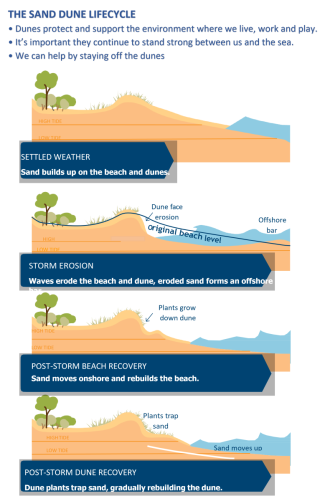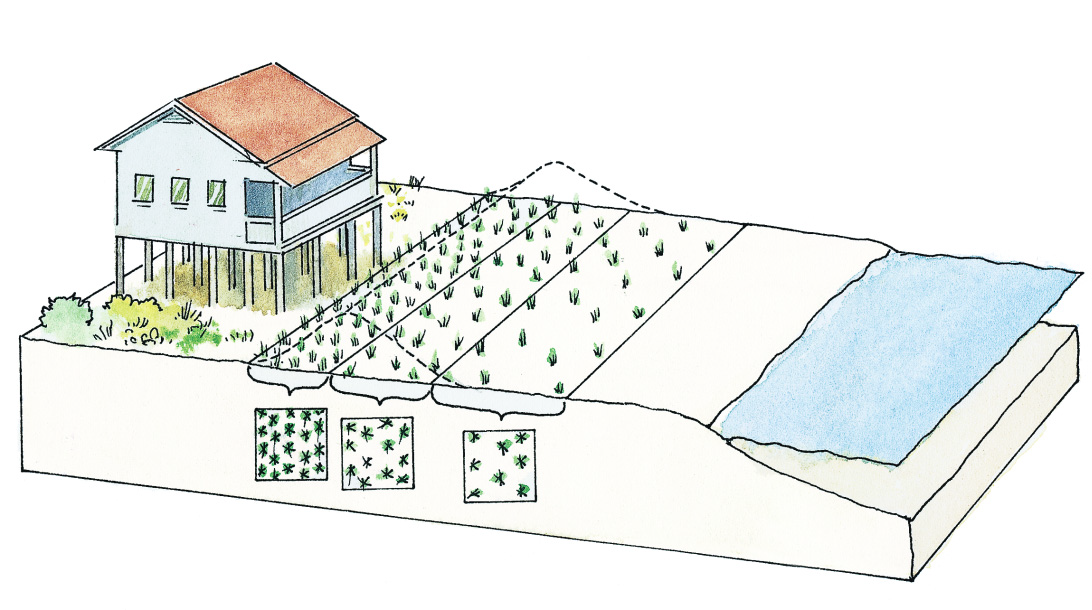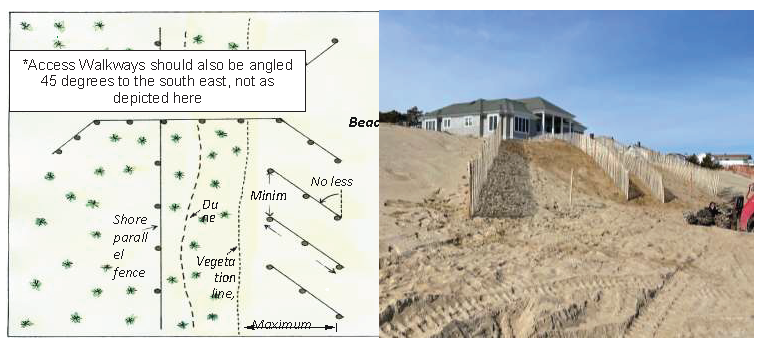Barrier Beach/ Coastal Dune Resident Information

Dear Property Owner,
Thank you for working with us through this difficult storm season. As you may be aware, the Town of Salisbury is working with private property owners and state agencies to try to assist in management of the shared resource area, the beach. As part of this effort, I would like to share some information that will be useful in the coming month. Please note: Any activity that involves disturbance of the sand or vegetation in or within 100 feet lands subject to flooding, salt marsh, coastal dune or beach or within 200 feet of perennial streams, requires a permit from the Conservation Commission. Any work that disturbs the soil or vegetation at the Salisbury Beach area (from the ocean to the marsh) requires approval from the Conservation Commission. Contact the Conservation Office at (978)499-0358 for more information or see DEP regulations - 310 CMR 10.00.
Temporary measures such as sand bags, haybales, or other erosion control measures need be approved by the Conservation Commission before placement in the resource area. Currently, many property owners have deployed emergency erosion control measures that were not permitted, such as the use of hay or straw bales and sand bags, to protect dunes. Though understandable, these measures are temporary in nature and interfere long term with the dune building process. All emergency erosion control measures that did not receive permits need to be removed before the start of shorebird mating season on April 1st. If you have questions about if this applies to your property or not please contact me at the information above to discuss.
Planting beachgrass is an important step to stabilizing and trapping windblown sand on the coastal dune. Please call the Conservation Commission if you intend to plant with your anticipated schedule and location. Below are commission recommend planting instructions for American Beachgrass on the primary frontal dune:
Beachgrass culms should be planted in staggered rows to maximize the capture of sand and to avoid creating wind tunnels. Approximately 1-3 culms should be planted per hole at a depth of 8-10 inches and approximately 12 inches apart to maximize sand build-up and enhance erosion control at dune crest. The sand should be firmly pressed down around the culms to secure them in place. After planting several rows with this spacing, increase the plant spacing and row width to 18 to 24 inches as you move down the slope toward the ocean. Increase the plant spacing and row width to 36 inches for the last two or three rows closest to the ocean. Remember that all plants should be planted well landward of the high-tide line and seasonal beach fluctuations. See the below figure from The Dune Book by Spencer Rodgers and David Nash for clarification. Also attached is Stormsmart Properties Fact Sheet 3: Planting Vegetation to Reduce Erosion and Storm Damage by The Massachusetts Office Of Coastal Zone Management

Watering of newly planted clums may be needed within the first few months especially if we have minimal rainfall. Excess watering should be avoided.
Beachgrass culms should be fertilized 30 days after planting, but not before April 1. Split the fertilizer applications: one in spring (after April 1) and another in the late summer/early fall
Apply no more than 1 pound of nitrogen per 1,000 square feet in a single application. Once the stand is established, the rate of fertilizer can be reduced by half or applied only when the stand appears to be weakening.
Sand fencing is also an important aspect of building a dune naturally. This activity is regulated under the MA Wetlands Protection Act. Please call the Conservation office if you plan to install sand fencing.
Sandfence should be installed in sections of 5' - 15' in length with fences that consist of typical wooden slats (approx. 3/8 in thick, 1 1/2 in wide & 48 in high) connected with wire and supported by metal or wooden posts. The Conservation Commission recommend round wooden posts 2” to 4” inches in diameter. Top of the sand fence should be installed higher than the supporting posts and within sndangered species mapped habitat wooden support posts should be cut at 45-degree angle. See attached general fence detail per the Department of Conservation and Recreation Salisbury Beach Operation and Maintenance Plan.
The sand fence should be installed diagonally (northwest to southeast orientation) at a 45-degree angle and sections be spaced 25-50 feet apart except when bordering walking paths.
See the below figure from The Dune Book by Spencer Rodgers and David Nash for clarification. Also attached are Stormsmart Properties Fact Sheet 6: Sand Fencing by The Massachusetts Office Of Coastal Zone Management and photographs of DCR’s sand fencing as example at Public Access 10.

No less than 45o Sand Fencing Detail
Shore parallel fence located landward of the dune crest
Vegetation line, toe of dune or erosion scarp
Maximum 10 feet
*Access Walkways should also be angled 45 degrees to the south east, not as depicted here
Beach Access walkways: This activity is regulated under the MA Wetlands Protection Act. Above-grade walkover access structures and stairs require filing a Notice of Intent with the Salisbury Conservation Commission. On at-grade access also requires Conservation approval though a lesser permit is typical.
On grade walks are typically no wider than 36 inches and the alignment needs to be well marked. The direction or approach of the at-grade access will be determined based upon site conditions. Generally, the approach should be to the southeast at a 45-degree angle to the shore. Please see below, the Salisbury Beach Dune Walkover Design Standards. As always, please contact me with any questions.
Beach Access Design Standards Vegetation to Reduce Erosion and Storm Damage
The Dune Book Sand Fencing Fact Sheet
Request to Plant Dune Grass/ Install Sand Fencing Form

